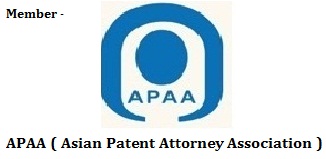Design Registration Process/Procedures
Design registration in India gives the owner, a monopoly on his or her product, i.e. the right for a limited period to stop others from making, using or selling the product without their permission and is additional to any design right or copyright protection that may exist automatically in the design.
‘Article’ under the Designs Act, 2000
Under the Designs Act, 2000 the “article” means any article of manufacture and any substance, artificial, or partly artificial and partly natural and includes any part of an article capable of being made and sold separately.
‘Set of article’ under the Designs Act 2000
If a group of articles meets the following requirements then that group of articles may be regarded as a set of articles under the Designs Act, 2000:
Ordinarily on sale or intended to be used together.
All having common design even though articles are different (same class).
Same general character. Generally, an article having the same design and sold in different sizes is not considered as a set of articles. Practical example: “Tea set”, “Pen set”, “Knife set” etc.
Essential requirements for the registration of ‘Design’ under the Designs Act, 2000 are:
The design should be new or original, not previously published or used in any country before the date of application for registration. The novelty may reside in the application of a known shape or pattern to new Subject matter. Practical example: The known shape of “Kutub Minar” when applied to a cigarette holder the same is registrable. However, if the design for which application is made does not involve any real mental activity for conception, then registration may not be considered.
The design should relate to features of shape, configuration, pattern or ornamentation applied or applicable to an article. Thus, designs of industrial plans, layouts, and installations are not registerable under the Act.
The design should be applied or applicable to any article by any industrial process. Normally, designs of artistic nature like painting, sculptures and the like which are not produced in bulk by any industrial process are excluded from registration under the Act.
The features of the design in the finished article should, appeal to and are judged, solely by the eye. This implies that the design must appear and should be visible on the finished article, for which it is meant; Thus, any design in the inside arrangement of a box, money purse or almirah may not be considered for showing such articles in the open state, as those articles are generally put in the market in the closed state.
Any mode or principle of construction or operation or anything which is in substance a mere mechanical device, would not be registerable design. For instance, a key having its novelty only in the shape of its corrugation or bend at the portion intended to engage with levers inside the lock associated with, cannot be registered as a design under the Act. However, when any design suggests any mode or a principle of construction or mechanical or other action of a mechanism, a suitable disclaimer in respect thereof is required to be inserted on its representation, provided there are other registerable features in the design.
The design should not include any Trade Mark or property mark or artistic works as defined under the Copyright Act, 1957.
Applying for Registration of Design
The application for registration of design can be filed by the applicant himself/herself or through a professional person ( i.e. patent agent, legal practitioner). However, for the applicants not being residents of India, an agent residing in India has to be employed.
Place of applying for Registration of Design
Any person who desires to register a design shall submit the following documents to the Controller of Designs, The Patent Office at Kolkata, or at any of its branch offices at New Delhi, Mumbai and Chennai. For address and contact numbers, click here
Duration of the Registration of a Design and its extension
The duration of the registration of a design is initially ten years from the date of registration but in uses where the claim to priority has been allowed, the duration is ten years from the priority date. This initial period of registration may be extended by a further period of 5 years on an application made in Form-3 accompanied by a fee of Rs. 2,000/- to the Controller before the expiry of the said initial period of Copyright. The proprietor of a design may make an application for such an extension even as soon as the design is registered.
Cancellation of Registration of a Design
The registration of a design may be canceled at any time after the registration of the design, on a petition for cancellation in form 8, with a fee of Rs. 1,500/- to the Controller of Designs, on the following grounds:
That the design has been previously registered in India or
That it has been published in India or elsewhere prior to the date of registration or
The design is not new or original or
Design is not registrable or
It is not a design under Clause (d) of Section 2.
Restoration of the lapsed design due to non-payment of extension fee within a prescribed time
Registration of design will cease to be effective on non-payment of extension fee for a further term of five years if the same is not paid before the expiry of the original period of 10 years. However, a new provision has been incorporated in the Act so that lapsed designs may be restored, provided the following conditions are satisfied:
Application for restoration in Form-4 with a fee of Rs. 1,000/- is filed within one year from the date of lapse stating the ground for such non-payment of extension fee with sufficient reasons. If the application for restoration is allowed, the proprietor is required to pay the extension fee of Rs: 2,000/- and an additional fee of Rs. 1,000/- and finally the lapsed registration is restored.
Piracy of a Design
Piracy of a design means the application of a design or its imitation to any article belonging to a class of articles in which the design has been registered for the purpose of sale or importation of such articles without the written consent of the registered proprietor. Publishing such articles or exposing them for sale with knowledge of the unauthorized application of the design to them also involves piracy of the design.
Penalty for the piracy of a Registered Design
If anyone contravenes the copyright in a design for every contravention he/she is liable to pay a sum not exceeding Rs. 25,000/- to the registered proprietor subject to a maximum of Rs. 50,000/- recoverable as contract debt in respect of any one design. The registered proprietor may bring a suit for the recovery of the damages for any such contravention and for an injunction against repetition of the same. Total sum recoverable shall not exceed Rs. 50,000/- as contract debt as stated in Section 22 (2) (a). The suit for infringement, recovery of damage should not be filed in any court below the court of District Judge.
Patent rights are territorial; an Indian patent does not give rights outside of India.
Patent rights last for up to 20 years in India and in most countries outside India.
Depending on where you wish your patent to be in effect, you must apply to the appropriate body. In India, this is The Indian Patent Office. There are various Patent Offices around the world. Alternatively, a Patent Agent can apply on your behalf.



